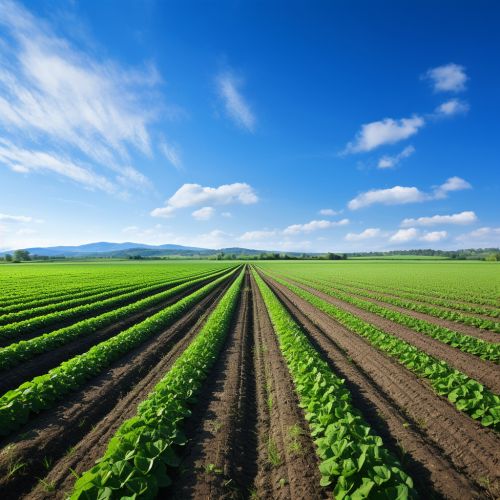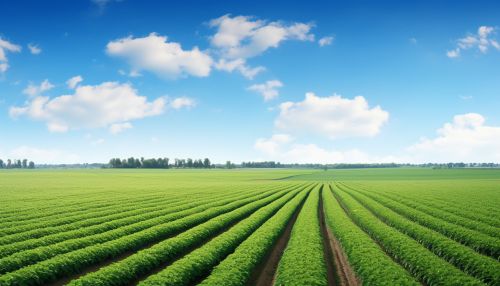Climate Change and Agriculture
Introduction
Climate change and agriculture are interrelated processes, both of which take place on a global scale. Global warming is projected to have significant impacts on conditions affecting agriculture, including temperature, precipitation and glacial run-off. These conditions determine the carrying capacity of the biosphere to produce enough food for the human population and domesticated animals. The field of agronomy, the application of soil and plant sciences to land management and crop production, plays a vital role in understanding and mitigating the effects of climate change on agricultural systems.


Impact of Climate Change on Agriculture
Climate change affects agriculture in a number of ways. These include through changes in average temperatures and rainfall, increased frequency of extreme weather conditions, and modifications of pests and diseases. Changes in these atmospheric conditions can trigger significant modifications in plant functions, which in turn influence agricultural productivity.
Temperature
Increases in temperature can significantly impact crop yields, leading to a decrease in agricultural productivity. For example, each degree Celsius increase in global mean temperature would, on average, reduce yields of wheat by 6.0%, rice by 3.2%, maize by 7.4%, and soybean by 3.1%. These figures take into account only the direct effects of temperature and do not consider the effects of changes in rainfall and climate variability, the spread of pests and diseases, or the potential for CO2 fertilization.
Rainfall
Changes in the frequency and distribution of rainfall can also affect agriculture. In some regions, particularly in the tropics, rainfall is likely to increase, while in others, such as the Mediterranean and southern Africa, it is likely to decrease. This can lead to increased frequency and severity of droughts, which can cause crop failures and loss of livestock, while excessive rainfall can lead to flooding and soil erosion.
Extreme Weather Events
Increased frequency and intensity of extreme weather events can have severe impacts on agriculture. Droughts, heatwaves, heavy rainfall events and associated flooding can lead to crop failures and loss of livestock. In addition, increased variability in weather patterns can make farming more difficult due to uncertain weather forecasts and growing conditions.
Mitigation Strategies
There are several strategies that can be employed to mitigate the impacts of climate change on agriculture. These include the development of climate-resistant crops, improved farming practices, and the use of technology to better predict weather patterns.
Climate-Resistant Crops
One of the primary ways to mitigate the impact of climate change on agriculture is through the development of climate-resistant crops. This involves breeding crops that are resistant to heat, drought, flooding, and increased salinity. In addition, crops can be genetically modified to increase their resilience to climate change.
Improved Farming Practices
Another strategy is to improve farming practices. This can include the use of more efficient irrigation systems, the implementation of sustainable farming practices such as organic farming and permaculture, and the use of cover crops and crop rotation to improve soil health and sequester carbon.
Use of Technology
Technology can also play a key role in mitigating the impacts of climate change on agriculture. This can include the use of satellite imagery and remote sensing technology to monitor weather patterns and crop health, the use of precision farming techniques to optimize the use of water and fertilizers, and the use of technology to improve crop storage and reduce post-harvest losses.
Conclusion
Climate change poses significant challenges to agriculture, but through the use of innovative strategies and technologies, it is possible to mitigate some of these impacts. Continued research and development in this area is critical to ensuring the sustainability of our global food system in the face of a changing climate.
